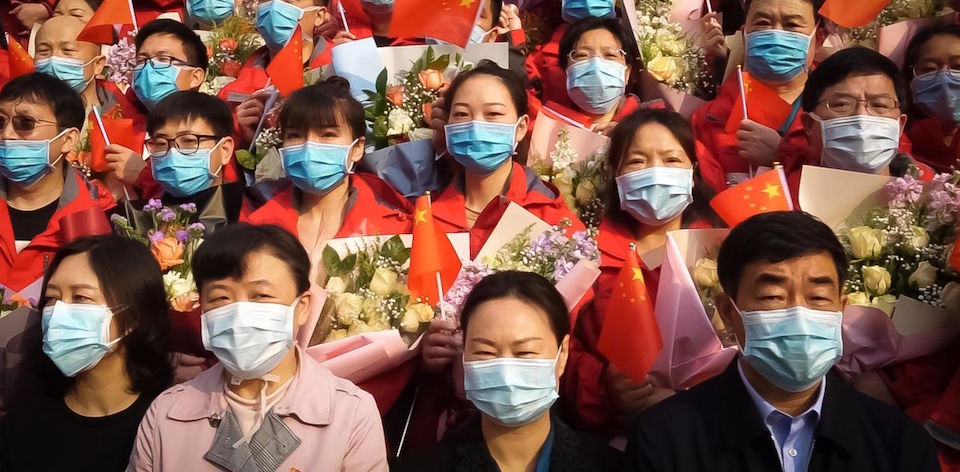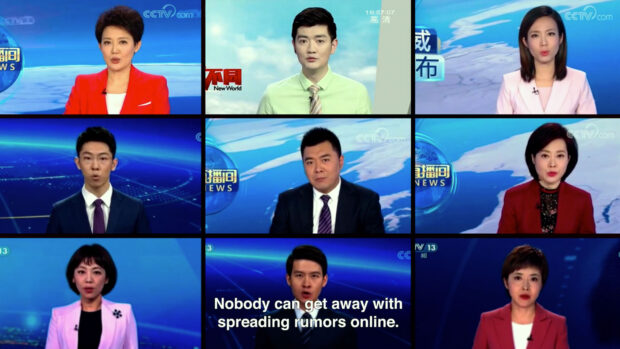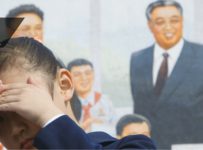Summary
Nanfu Wang once again turns her sharp editing and research skills into a scathing dismantling of the Chinese and American government responses to COVID-19 from where it all began – Wuhan, China.
In just five years since her debut with Hooligan Sparrow, Chinese-American filmmaker Nanfu Wang has quickly become one of the most exciting voices in the documentary space. This is thanks to her unique style which intertwines her personal experiences as a Chinese-American with broader social issues. Finding herself in China during the 2020 Chinese New Year period, Wang once again uses her sharp critical eye, melding of the micro and macro to deconstruct the handling of the COVID-19 outbreak across both China and the United States (US), with IN THE SAME BREATH.
From the opening scenes, Wang displays the same strengths in editing evident in previous work One Child Nation, juxtaposing the disparity between CCP propaganda and reality. Playing with the documentary form to highlight the hypocrisy and censorship of the CCP, Wang is biting, if not almost cheeky, in her execution. News reports of doctors punished for spreading “false” rumours of a virus is played immediately after Xi Jinping’s hopeful 2020 New Year’s address; text over footage of CCP Chinese New Year celebrations declare it is “The Day of Wuhan’s lockdown;” and in a particularly inventive shot, a grid of nine different news reports use the exact same script to report on and discourage whistleblowing.
Wang’s exposure of the CCP’s intense image management dominates most of the film’s first act. It is here, when drawing a line between the CCP’s lack of transparency and the traumatic effect on ordinary citizens, that IN THE SAME BREATH is at its most affecting. Told through the testimony of COVID sufferers and their families, and bolstered by on-the-ground footage sourced from a network of cameramen, Wang dives into how the CCP’s concern for its international image likely resulted in more deaths. In one story – demonstrative of Wang’s ability to simultaneously capture both the individual and broader societal perspectives – a doctor and his wife, Runzhen Chen, own a private health clinic just metres from the Huanan Seafood Wholesale Market. Over the first four days of January, CCTV captures tens of patients with respiratory symptoms asking for treatment at Chen’s clinic, only to be dismissed as having a non-serious cold.
At the time, the CCP was busy suppressing rumours of a SARS-like virus despite the first case known as early as December 2019. Chen’s husband eventually becomes sick, and is turned away from four hospitals due to vague reasons. It is not until three weeks into January, following a public-facing congress meeting in Wuhan, that the government acknowledges human transmission of COVID. Their message switches from one of denial to strength in the face of adversity, praising the heroics of frontline workers and nationalism. (At one point, a hidden camera catches journalists coaching doctors to say “Go Wuhan, Go China”). But for Rhen it is too late – her husband passed away shortly after contracting the virus. Despite her ordeal, Chen still believes in the Chinese government, expressing her thanks for their handling of the situation – a sentiment shared by many Wuhan citizens who praise socialism and the CCP following the end of lockdown.
While Wang’s wide-reaching ambition and mountains of footage deliver these powerful moments, it brings with it some structural weakness elements, namely the narration when switching between the U.S. and China. As the film enters its third act and begins to explore the parallels between the U.S and Chinese response,the depth and cohesiveness of Wang’s many areas of inquiry begins to collapse under the weight of its own ambition. Government and media propaganda, motivations of whistleblowers, plight of healthcare workers, separation of families in lockdown, censorship of insiders and citizen journalists, lack of hospital beds and resources, and the value of free speech: it is all attempted to be covered across both the US and China contexts, and yet only some of these are given the time they need to breathe and sink in with audiences.
For example, the comparatively brief examination of ‘fake news’ in the US is boiled down to a quick montage of Dr Fauci and President Trump initially downplaying the seriousness of the disease. Also shown are the reactions of a medical professional towards COVID-deniers, where Wang notes that she feels some empathy with protesters given her own distrust of the Chinese media.
Wang’s narration sees her regularly use her own Chinese-American perspective to comment on her process and footage. Whilst Wang is upfront with her bias, there are times when her narration destroys the subtlety or any chance for viewer interpretation that her skillful editing can easily handle itself. She recalls her own symptomatic son being refused testing in hospitals in the US – an obvious parallel to the story of Rhen in China. It’s a revelation on the neglectful treatment evident in both democratic and authoritarian responses which stands on its own, and Wang’s narration that she “started to see reflections of Wuhan” in her situation thus feels unnecessary.
As the film cycles through new topics as it heads towards its ending, these narrative issues only become clearer with the film’s grandiose conclusion. Wang neatly claims the worldwide outbreak could have easily been avoided had governments put aside their pride and valued the lives of their citizens – an idealistic view that benefits from hindsight, though one not totally devoid of truth. However, it is in Wang’s journey to reach such a conclusion that IN THE SAME BREATH holds its power, providing (particularly Western) audiences new insight into how inefficient government responses have allowed the pandemic to propagate to where we are today, and the experiences of ordinary citizens just trying to survive as a result.
2021 | USA | DIRECTOR: Nanfu Wang | WRITERS: Nanfu Wang | DISTRIBUTOR: HBO Max, SXSW 2021 | RUNNING TIME: 95 minutes | RELEASE DATE: 16-20 March 2021 (USA)






